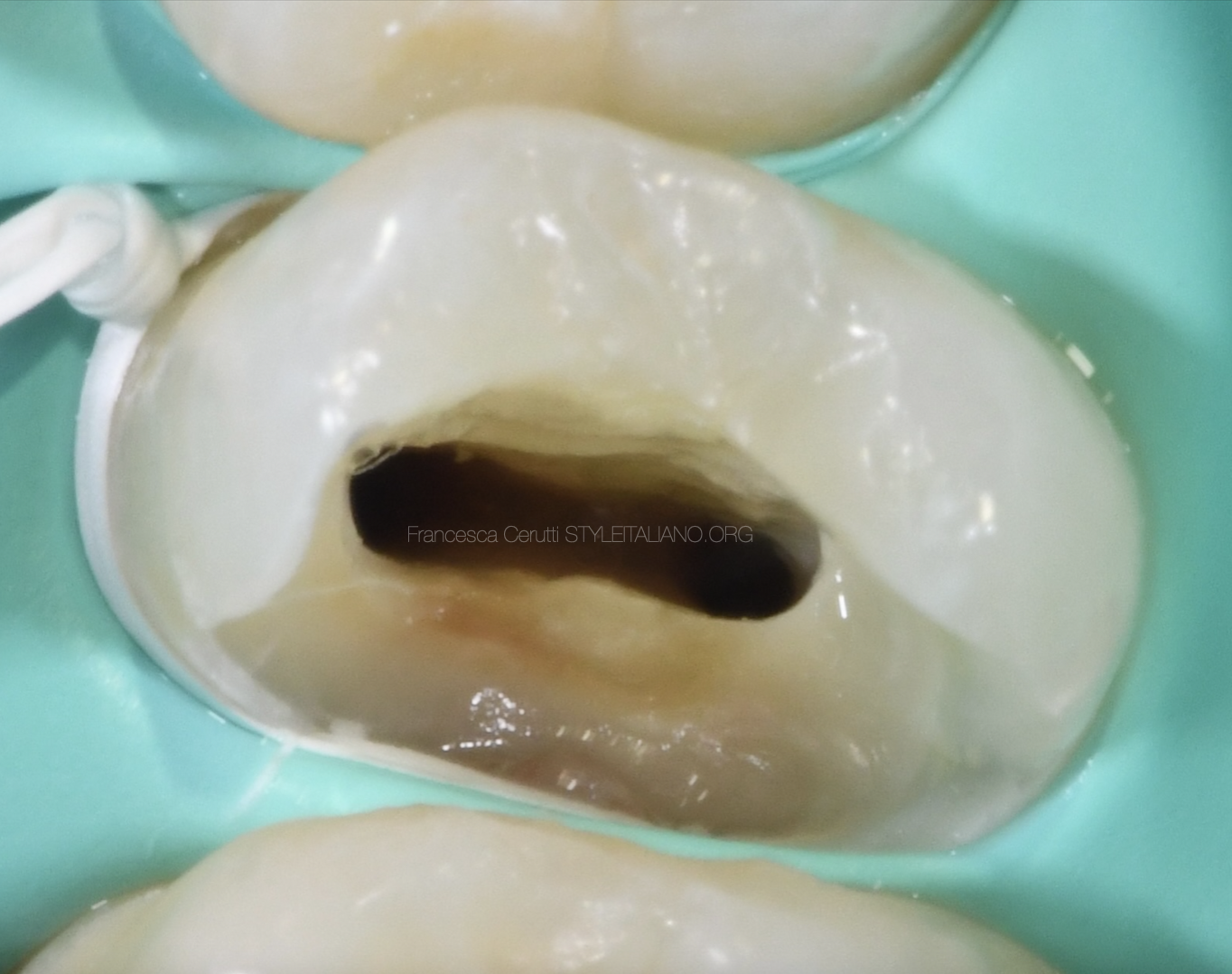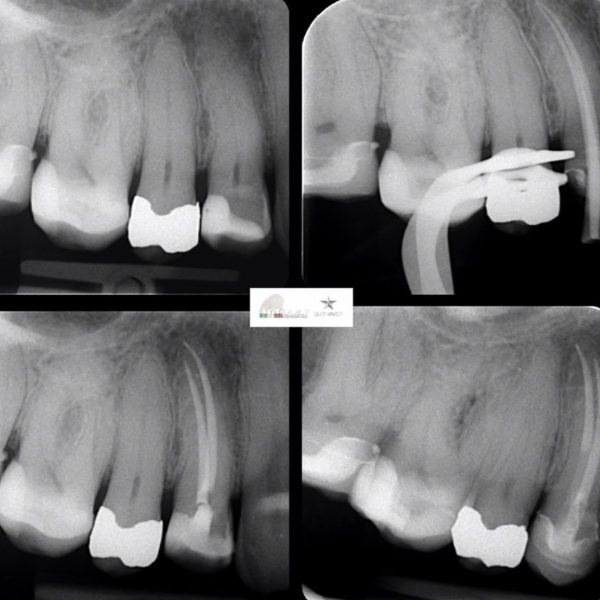
Pre-endodontic build up of an upper second premolar
15/07/2023
Fellow
Warning: Undefined variable $post in /var/www/vhosts/styleitaliano-endodontics.org/endodontics.styleitaliano.org/wp-content/plugins/oxygen/component-framework/components/classes/code-block.class.php(133) : eval()'d code on line 2
Warning: Attempt to read property "ID" on null in /var/www/vhosts/styleitaliano-endodontics.org/endodontics.styleitaliano.org/wp-content/plugins/oxygen/component-framework/components/classes/code-block.class.php(133) : eval()'d code on line 2
One of the main objectives in endodontic treatment is the disinfection of the root canal system. However, most of the time we face severely destroyed teeth, which means a challenge for clinicians from the absolute isolation, the selection of the clamp, the isolation technique, etc. Therefore, we must know or resolve these situations with the help of restorative procedures, in this case with pre-endodontic build up.
Once the caries removal is complete, we must analyze the remaining dental structure, most of the time one or more walls are missing, therefore, our irrigant makes the risk of leaking more likely. In order to prevent this, it is advisable to do a pre-endodontic build up to work in a safer environment and prevent the risk of post-treatment leakage.
Advantages of performing pre-endodontic build up are:
- Simplifies rubber dam isolation between visits.
- Retains irrigating solutions in the pulp chamber longer.
- Prevents bacterial leakage between each visit
- Creates a reproducible reference point for working length and instrumentation
- Facilitates post endodontic restoration
- Prevents fractures of the weakened tooth structure
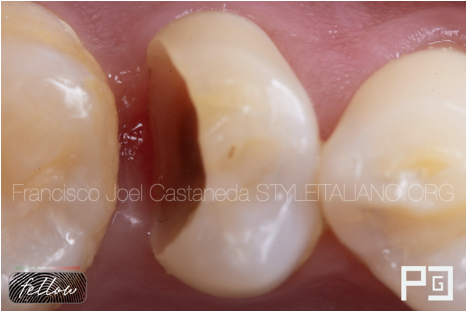
Fig. 1
A 55 yrs old man came to our office complaining discomfort related to the second upper left premolar.
Pulp diagnosis of symptomatic irreversible pulpitis.
Dental destruction can be observed, which would imply a challenging rubber dam isolation.

Fig. 2
Pre operative radiograph
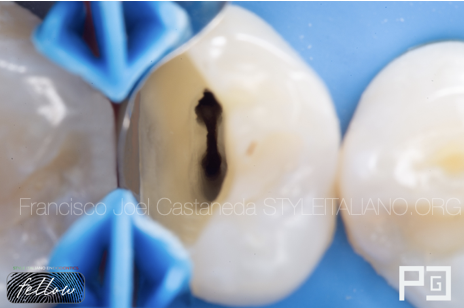
Fig. 3
We perform multiple isolation and place the clamp on a posterior tooth, this will allow us to work more freely and be able to place our matrix band system.
After the rubberdam placement the old composite restoration was carefully removed using a cylindrical medium-grain bur and the margins were clean and smoothened using a silicon bur.
The matrix band system is placed around the tooth, ensuring perfect closure of the distal margin.

Fig. 4
In this step, the use of a high-fill, light-curing restorative material is recommended instead of a dual-cure composite cement due to its superior mechanical properties and wear resistance.

Fig. 5
After the build up or the creation of the distal wall, we can practically work comfortably in root canal treatment.
Thus we prevent saliva filtration, irrigant filtration.

Fig. 6
Instrumentation with martensitic files with taper 04.

Fig. 7
Working length
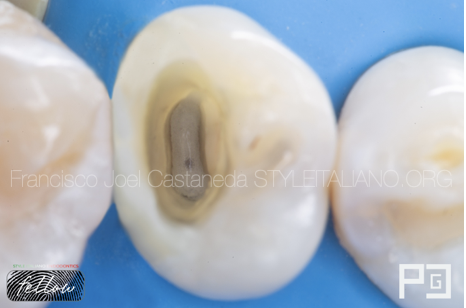
Fig. 8
Irrigation with 3% sodium hypochlorite, and ultrasonic activation.
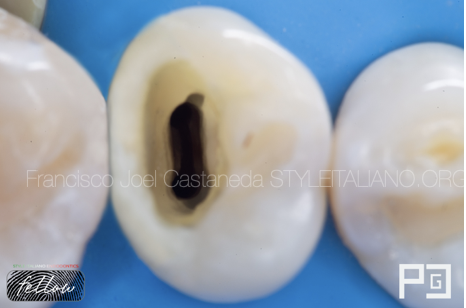
Fig. 9
Ready for the obturation
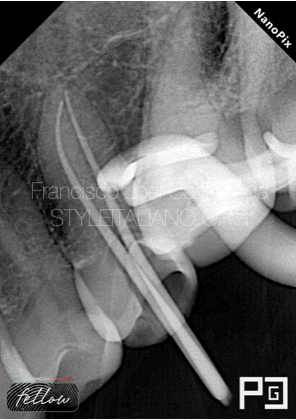
Fig. 10
Master cone fit
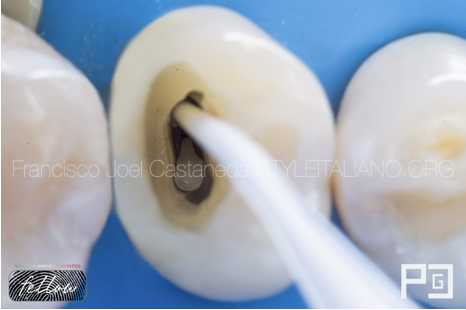
Fig. 11
Hydraulic sealer injection
Note that the canals confluent with each other.
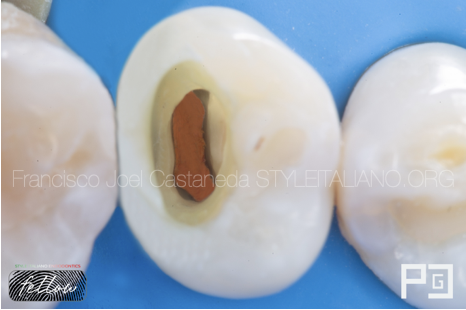
Fig. 12
Obturation done.
Clean the excess of gutapercha and sealer is a very important step for a correct adhesive protocol step.

Fig. 13
Post-op X-Ray with the final restoration and a proper contact point.

Fig. 14
Endo from A to Z
Conclusions
As endodontists o clinicians, we must do optimal treatments or in the best possible way, this implies that we must know how to handle different clinical situations, in this case, a restorative procedure before endodontics, will simplify and optimize our treatments.
In endodontic treatment, multiple variables can affect the outcome of a case. The use of pre-endodontic build-up will enhance by preventing marginal leakage before, during, and after treatment that is provided prior to placing a final restoration.
Bibliography
Gavriil, D., Kakka, A., Myers, P., & O´Connor, C. J. (2021). Pre-endodontic restoration of structurally compromised teeth: current concepts. British Dental Journal, 231(6), 343–349. https://doi.org/10.1038/s41415-021-3467-0
Iaculli, F., Rengo, C., Lodato, V., Patini, R., Spagnuolo, G., & Rengo, S. (2021). Fracture resistance of endodontically-treated maxillary premolars restored with different type of posts and direct composite reconstructions: A systematic review and meta-analysis of in vitro studies. In Dental Materials (Vol. 37, Issue 9, pp. e455–e484). Elsevier Inc. https://doi.org/10.1016/j.dental.2021.06.007
Devroey, S., Calberson, F., & Meire, M. (2020). The efficacy of different cleaning protocols for the sealer-contaminated access cavity. Clinical Oral Investigations, 24(11), 4101–4107. https://doi.org/10.1007/s00784-020-03283-8
Kameyama, A., Saito, A., Haruyama, A., Komada, T., Sugiyama, S., Takahashi, T., & Muramatsu, T. (2020). Marginal leakage of endodontic temporary restorative materials around access cavities prepared with pre-endodontic composite build-up: An in vitro study. Materials, 13(7). https://doi.org/10.3390/ma13071700
de Carvalho, M. A., Lazari, P. C., Gresnigt, M., del Bel Cury, A. A., & Magne, P. (2018). Current options concerning the endodontically-treated teeth restoration with the adhesive approach. In Brazilian Oral Research (Vol. 32, pp. 147–158). Sociedade Brasileira de Hematologia e Hemoterapia. https://doi.org/10.1590/1807-3107bor-2018.vol32.0074
Valizadeh, S., Ranjbar Omrani, L., Deliperi, S., & Sadeghi Mahounak, F. (2020). Restoration of a Nonvital Tooth with Fiber Reinforce Composite (Wallpapering Technique). Case Reports in Dentistry, 2020. https://doi.org/10.1155/2020/9619787



